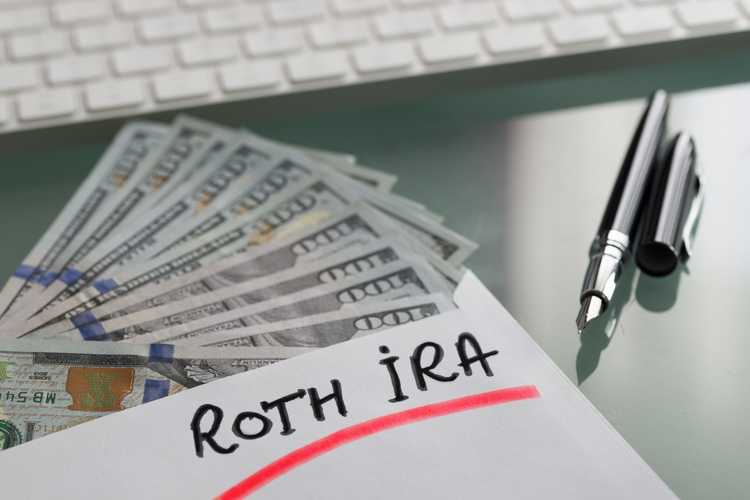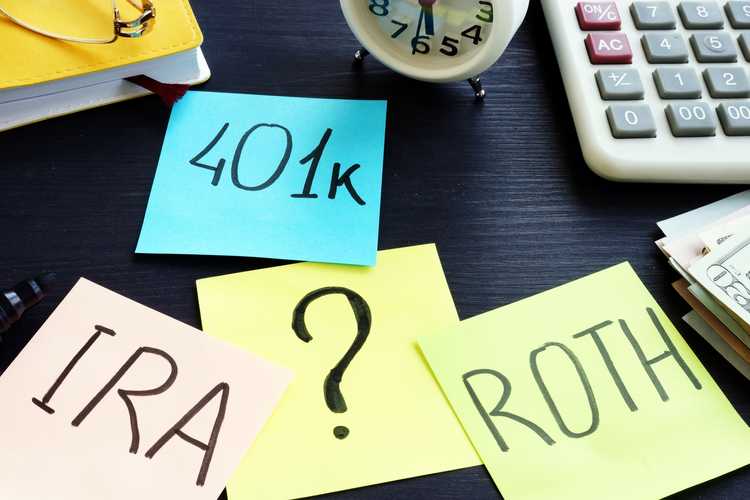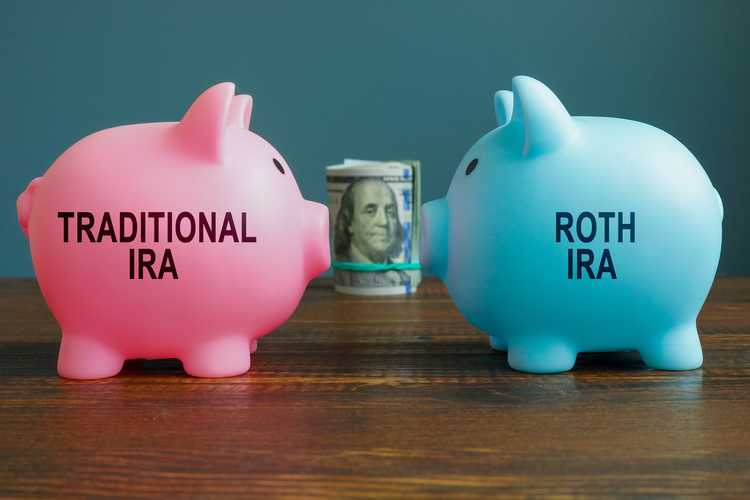Personal Finance
Advertiser Disclosure

Best Roth IRA Accounts for February 2025
The best Roth IRA accounts come with low starting balance requirements, minimal fees (or no fees), and ample investment options and tools.

401(k): Definition, How It Works, Types, Requirements
Everything you need to know about 401(k) plans, how they work, what happens if you leave a job, and some additional retirement savings options to consider.

Roth IRA Contribution and Income Limits 2024 and 2025
Roth IRA contribution and income limits generally are revised each year. These limits determine how much you can contribute to an IRA in general and to a Roth IRA specifically.

What Is a Roth 401(k)? Essential Guide, 2024
A Roth 401(k) is a designated Roth retirement savings account funded with after-tax earnings and kept within an employer-sponsored 401(k) retirement plan.

Roth IRA vs. 401(k): What's the Difference?
Let’s take a look at the differences between a Roth IRA and the two types of 401(k) accounts and what they tell you about which to use for retirement.

401(k) Matching: Meaning, How It Works, and How to Get the Most Out of It
A 401(k) match is a contribution made by an employer to match some or all of an employee’s contributions to a company retirement plan. Employer contributions can also be made on a nonmatching basis. Not all 401(k) plans offer a match.

Everything You Need to Know About the Spousal IRA
The spousal IRA allows a working spouse to contribute to a non-working spouse’s retirement savings. Here’s what you need to know.

What Are the 401(k) Contribution Limits for 2025? All You Need to Know
The limits for 2024 are higher than those for 2023—and 2025's are higher than 2024's—because the IRS adjusts them for inflation and cost of living increases every year. Plans can be more complicated than they seem. Read on to learn more.

Can You Have a 401(k) and an IRA?
You can have a 401(k) and an IRA, and contribute to both in the same year, most of the time. Learn more about the pros and cons of each—and their contribution limits—here.

Best Ways to Save for Retirement
Retirement looms large over most Americans, but fear not. You can start saving for retirement anytime, including today. Learn more.

Roth vs. Traditional IRA: Key Differences & How to Choose
Here are some key differences between a Roth IRA and a traditional IRA to help you choose the best investment account for your personal situation.

How Much Social Security Will I Get?
While it’s important to learn how to save and invest for retirement, it’s equally critical to learn how much Social Security you will get. Here’s how you can estimate that benefit.

401(k) Rollover to a Roth IRA: What You Need to Know
If you are contemplating rolling over your traditional 401(k) to a Roth IRA, there are a number of things you need to know before deciding whether the move is advantageous or not.

How to Check Your 401(k) Balance?
Trying to check your 401(k) balance with a former employer, but you haven’t been there in years? Here are some tips to help you out.

How to Plan for Retirement: 5 Steps
Retirement planning takes some effort, but the sooner you get started, the more flexibility you'll have later in life.

Rolling Over 401(k): An Essential Guide
When you separate from a job where you have an existing 401(k), you have options. Here’s how to roll over your 401(k) and the tax implications of doing so.

What is a Roth IRA?
Roth IRAs offer an alternative to traditional IRAs in terms of their tax treatment and other factors. They may be a good addition to your retirement savings efforts.

What is a Self-Directed IRA (SDIRA)?
A self-directed IRA (SDIRA) is a retirement account that offers investors the chance to hold a variety of alternative investments inside of their IRA.

What is a solo 401(k)?
A solo 401(k) is a retirement account for self-employed individuals who need higher limits to fast-track their retirement savings.

The rule of 72: What is it and how does it work?
Internal Revenue Code Section 72(t) allows you to take early withdrawals from your retirement account without paying a penalty by using a substantially equal periodic payments (SEPP) plan. Here’s what you need to know.
1.3936.0+2.11.42
